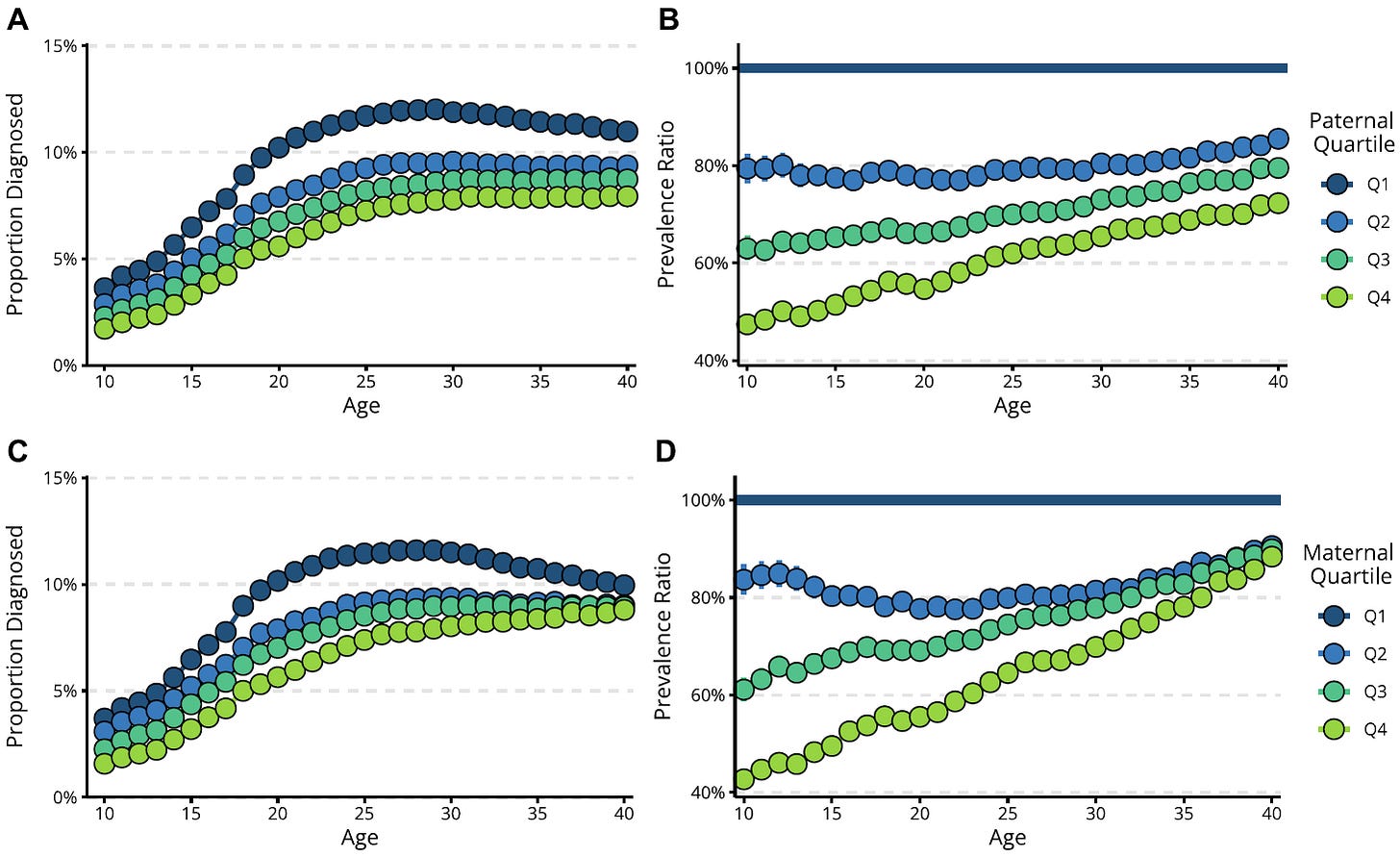Parental Income and Mental Health
Why the children of poorer parents have more psychiatric disorders

In this post, I’d like to walk you through four graphs that tell a fascinating story about the link between socioeconomic status and mental health. The graphs come from a new preprint by Hans Fredrik Sunde and colleagues, and are based on data from nearly 2.5 million Norwegians aged 10 to 40.
The key finding of the paper is that, for both sexes, lower parental income is linked to poorer mental health. Parental income has a direct impact on mental health in adolescence; in adulthood, however, the link is due almost entirely to shared genes - genes that affect both the parents’ income and their children’s mental health.
Graph 1: SES and Psychiatric Disorder Risk
The first graph shows the distribution of psychiatric disorders by age and parental income quartile. The top panels show the distribution for paternal income; the bottom panels show the distribution for maternal income. As you can see, individuals from lower-income families have a higher incidence of psychiatric disorders, with a particularly pronounced effect for those in the bottom quartile. The association is present for all ages, but is stronger among younger people than older ones.

Graph 2: SES and Specific Psychiatric Disorders
The second graph shows the relationship between paternal income and a selection of specific disorders. Nearly every disorder is more common among people whose families fall lower on the socioeconomic ladder. The one exception is anorexia, which is more common among the affluent.

